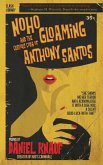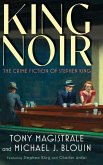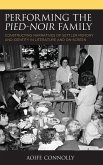Film noir: the name comes from the French for "black" or "dark film." It points to the central feature of the genre: mood. There is a darkness about film noir, a somberness accompanied by a thrill of dread and ever-present danger. This aura envelops wealthy heiresses, English aristocrats, tough-guy drifters, jazz musicians, drug dealers, and respected schoolteachers-all of whom have secrets to hide and much to lose if those secrets are unveiled. These four samples from the classic era of film noir--the 1940s and '50s-- The Strange Love of Martha Ivers, The Stranger, The Man with the Golden Arm, and Rebecca--give a uniquely sharp and compelling glimpse into the themes of noir. In settings as diverse as a squalid corner of Chicago, a quiet New England village, an industrial company town, and a gothic mansion on the coast of England, we see a tight mesh of human entanglements, bound by crime, hidden desires, and an overhanging past. These four films also offer us the visions of some of the greatest directors of all time, including The Stranger, by the legendary Orson Welles, and Rebecca, from Alfred Hitchcock, the pastmaster of suspense. Screen greats Sir Laurence Olivier, Barbara Stanwyck, Edward G. Robinson, Kirk Douglas, and Frank Sinatra give some of their most brilliant and spellbinding performances. These films exercise their power to this day. They expose the hidden motives that lie within every human being: viciousness, greed, hatred, and selfishness, along with love, courage, and integrity. We come to see that behind all human appearances lies an array of complex and intricate motives--some of them hidden even to the characters themselves. These printed versions fully and accurately replicate the final films. Unlike shooting scripts--which are often changed heavily by the time they reach the screen--these versions replicate the actual spoken dialogue word for word. Additional bridges describe the action as it reveals itself to the viewer. These new and unique versions bring readers as close as possible to these classic movies in their compelling final form. In addition, author and philosopher Richard Smoley provides a bracing and insightful foreword to the collection, showing where noir fits into the history of film--and of America--and showing how it continues to shape and influence our culture to this day.
Hinweis: Dieser Artikel kann nur an eine deutsche Lieferadresse ausgeliefert werden.
Hinweis: Dieser Artikel kann nur an eine deutsche Lieferadresse ausgeliefert werden.








